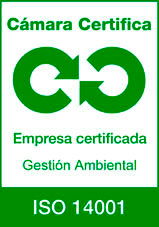Surface wave seismic - MASW


The methodology of the ReMi passive seismic technique is based on the SASW (Spectral Analysis of Surface Waves) and MASW (Multichanel Analysis of Surface Waves) techniques that extract from the spectral analysis of the surface seismic waves an estimate of the variation of the Velocity of propagation of the waves S, Vs, with the depth.
The principle of SASW and MASW techniques is associated with the dispersive nature of Rayleigh waves when they pass through a layered medium. The dispersion occurs when different frequencies travel at different speeds. By increasing the wavelength (for example by lowering the frequency) the Wave-Path-Depth increases. Based on this hypothesis, it is possible, by analyzing typical frequency ranges, to define the acoustic properties of the terrain at various depths.
The SASW method consists of measuring the phase velocity of the surface seismic waves for different wavelengths. These measurements are used to estimate the dispersion curve of the site under study. The phase velocities are extracted by means of direct comparison and the amplitude spectrum of each pair of seismometers. The spectra are calculated in real time using a waveform analyzer capable of performing a fast Fourier transform (Fast Fourier Transform)
Depending on different parameters can be estimated the range of detail of studies and depth of research by MASW method. Although it will always depend on the terrain materials and their homogeneity.
| Survey Length | Lateral resolution | Depth of research |
|---|---|---|
| 2.4 m | 0.1 m | 1 m |
| 11 m | 0.5 m | 1-6 m |
| 17.5 m | 0.75 m | 5-12 m |
| 24 m | 1 m | 6-18 m |
| 60 m | 2 m | 20-30 m |
| 92 m | 4 m | 30-50 m |
| 120 m | 5 m | >50 m |
From the typical SASW scheme for a device composed of two register channels. (Stokoe et al., 1994), the devices used in our geophysical services were designed. Reducing field registration time, and providing simultaneous information on regularly spaced receivers.

The MASW geophysical tecnique was initially developed to avoid the difficulties of using the SASW technique in noisy environments. Simultaneous recording of 12 or more channels (spaced from 0.5 to 10.0 m) facilitates a redundancy of phase velocity measurements by improving the quality of the data.




REMI - Pasive seismic
The ReMi method combines the ease of the SASW technique with the high degree of resolution typical of the MASW measurements. Microsites are recorded with a series of 12 or more low frequency geophones without the need to operate with an active seismic source. Field data can generally be recorded with classical seismographs used for refractive seismic, although more delicate instruments are available
Geophones must have a natural frequency in the range of 4 to 14 Hz and the typical recording time is 15 to 30 sec. Using high precision A / D converters (with a dynamic range in the order of 100-144 dB) it is possible to record frequencies as low as half the resonance frequency of the geophones. The frequencies searched will have a range of 2 to 25-30 Hz. This bandwidth is sufficient to define the wave velocity profile S, Vs, up to about one hundred meters deep. The recorded waveform is converted from the x-t (distance-time) domain to the domain p-f (slowness-frequency), in which the power spectrum is clearly visible, (see example of Figure 2):

A coherent series of data are visible in the slow-frequency spectrum (Fig. 2), thus clearly delineating the fundamental mode mode of surface waves (with the typical dispersive character) and some higher modes Higher order surface, compressional waves, sounds and incoherent noises). In this domain the fundamental mode curve is extracted. The Vs profile is obtained from the "modeling" of the dispersion curve
MASW method aplications
This geophysical technique can be used, as a substitute for refraction seismic, in urban areas and in places where the noise level prevents the use of conventional refraction seismic. It is also very useful on auscultation of differential settlement of the land in buildings. And combined with refraction seismic, it provides dynamic ground modulus of elasticity. Very useful for the definition of foundations.
It must be borne in mind that its degree of definition is clearly inferior to that provided by refraction seismic.













